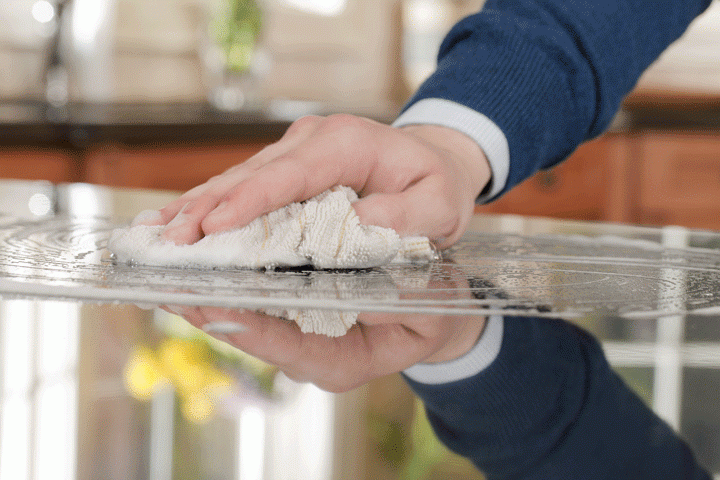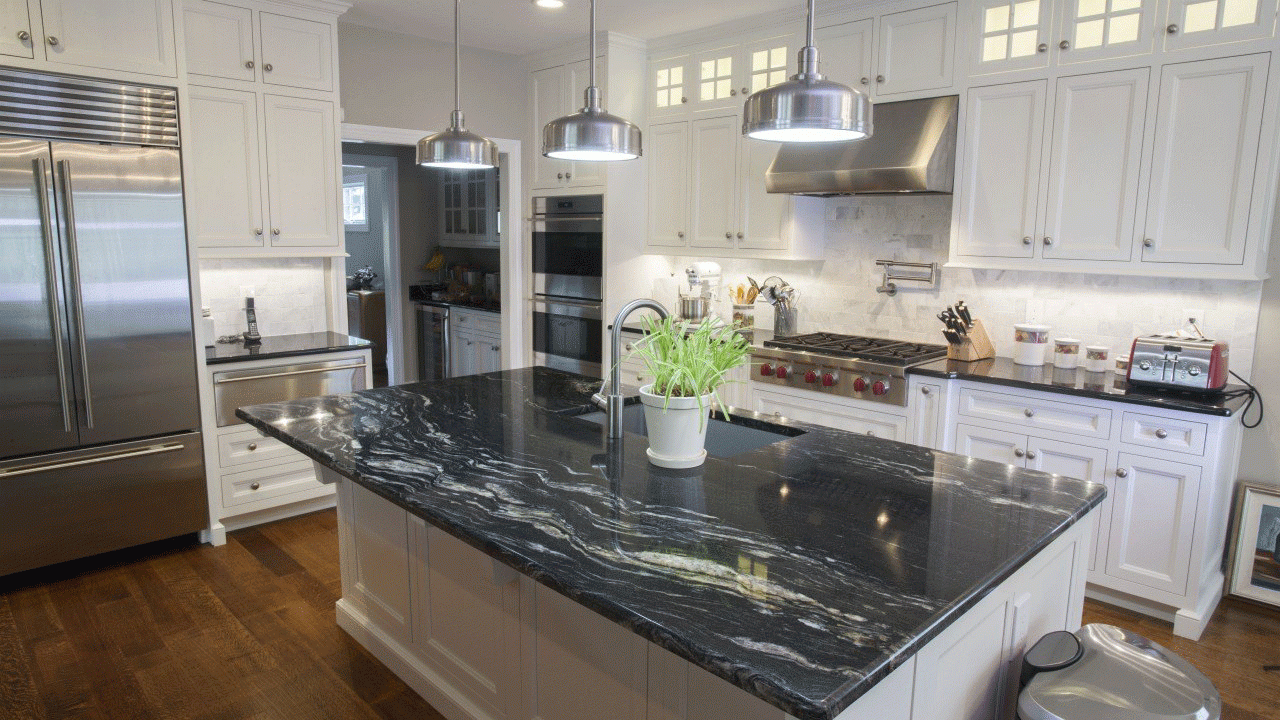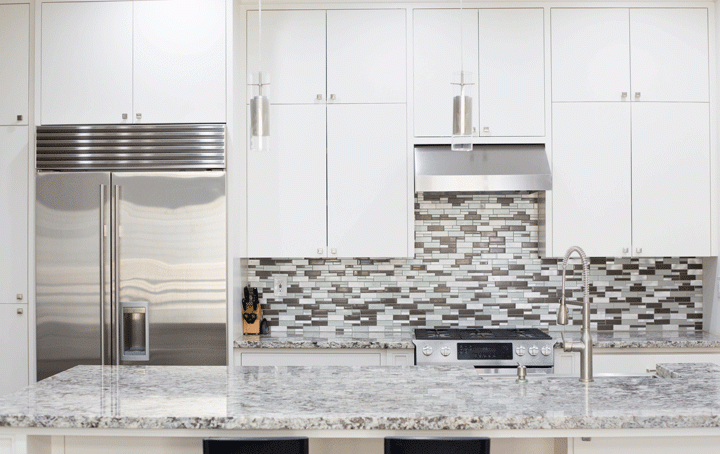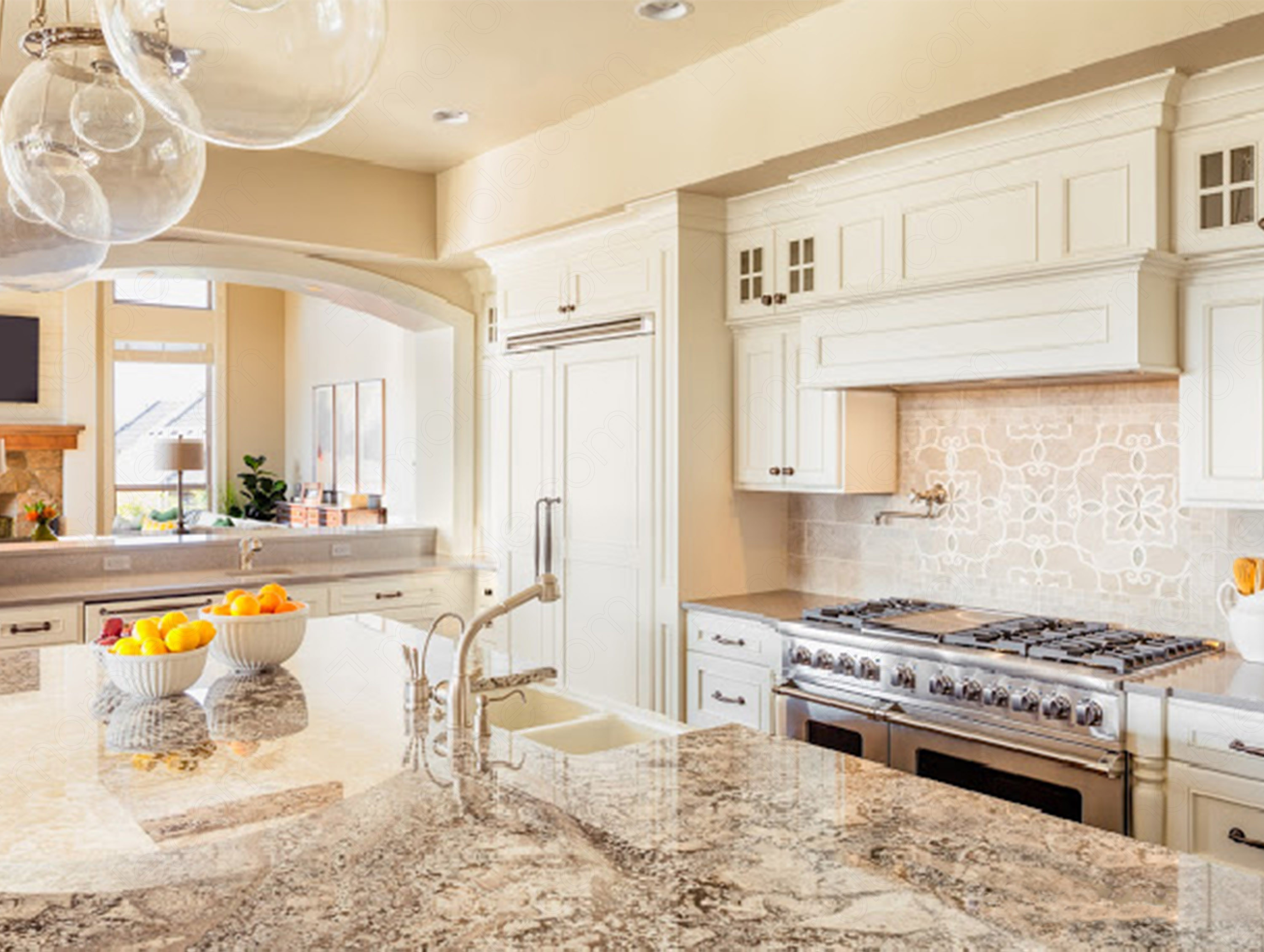
Table of Contents
If you want to install a new countertop in your home that is both beautiful and durable, granite countertops are surely a terrific fit. In addition to the durability these surfaces offer, the natural stone is among the easiest materials to clean and care for. These are just a few of the many reasons homeowners love to choose granite for their new kitchen countertops. The material is also a great choice for various other home surfaces, like backsplashes.
[get_quote]
Cleaning granite is a very important part of keeping it in great shape. Although granite surfaces are resistant to stains, you will still need to make an effort to care for the stone. By following the steps outlined in this guide, you will know how to properly clean granite countertops.
What Should You Never Use to Clean Granite?
Although you may find recipes for homemade household cleaners online, note that many of the ingredients in these mixtures can actually end up damaging your granite countertops. Never use any cleaning products that contain harsh chemicals like bleach or ammonia. Despite being labeled as multi-purpose cleaners, you should not use acidic cleaners such as Windex to clean granite either.
What Should You Use to Clean Granite?
To clean your granite countertops, you should use a product specifically designed for use on granite and/or natural stone surfaces, such as this one. This particular granite cleaner also contains a little bit of sealer, which can further protect the surface.
How Do You Clean Granite?
For a simple clean-up, you can wipe down your granite with warm water, mild dish soap and a paper towel. Wipe in circular motions for the best results. Note that while this is a good process for a quick cleaning, you will not get a deep clean from doing this.
On the other hand, to achieve a deeper and more effective clean, use granite cleaners such as the one mentioned above. Always follow the instructions that come with the specific product that you are using. Also make sure to use a microfiber cloth (or other soft cloth). Never use any abrasive cleaning tools such as steel wool. It is a good habit to clean your granite countertops daily to keep them in the best shape possible.
How Can You Remove Stains from Granite?
Removing a stain from granite will first involve determining what type of stain you have. Are you dealing with a water stain or something more difficult, such as a stain from cooking oil? Although granite does not stain often (especially if your seal is effective), there are DIY stain removers that you can make to solve the issue. In most cases, applying a poultice, a homemade stain remover, to the spot will get the job done. Although the ingredients for a poultice will differ based on what type of stain you are dealing with, most are a mixture that incorporates baking soda with other household products. Be careful if you are using hydrogen peroxide or isopropyl alcohol, as too much of these ingredients can end up discoloring your surface. As for the process itself, you apply the poultice to the spot of the stain, cover it with plastic wrap and let it sit for at least 24 hours before removing it. A good way to avoid water stains is to always use coasters when setting down drinks on a granite countertop.
How Do You Seal Granite?
Sealing granite is a quick and simple process. Begin by clearing off any items from the surface, then cleaning it. After this, apply your sealant using a brush or spray it on if it comes in a spray bottle. Once you have spread it on the surface, wait for 15 minutes. If you notice that all the sealer has absorbed in this time, re-apply another coat. Following this, wipe off any excess sealer that remains. Lastly, wait for at least 24 hours before using your countertop or other granite surface.
| Step 1 | Clear and clean the surface |
| Step 2 | Apply the sealer |
| Step 3 | Wait for 15 minutes |
| Step 4 | Wipe off any excess sealer |
| Step 5 | Let your granite sit for at least 24 hours |
[get_quote]
How Do You Know Granite Needs to Be Re-Sealed?
There is an easy test to see if your granite needs to be re-sealed. Pour a small amount of water on a small section of the granite. After 10 minutes, if the water has sunk into the surface, you should seal immediately. On the flip side, if the water beads on the surface, your current seal is still effective. In general, you should only need to re-seal most types of granite around once per year.
Compared to many other materials, granite is one of the easiest to clean and care for. As long as you keep up with this cleaning, your granite countertops and other surfaces can stay in terrific shape for years to come.
















 The article helped me immensely
The article helped me immensely
 I’m now more informed on the subject
I’m now more informed on the subject
 I have questions about Marble.com
I have questions about Marble.com
 The article was not accurate at all
The article was not accurate at all
 There is a serious lack of information
There is a serious lack of information
 I have questions about Marble.com
I have questions about Marble.com